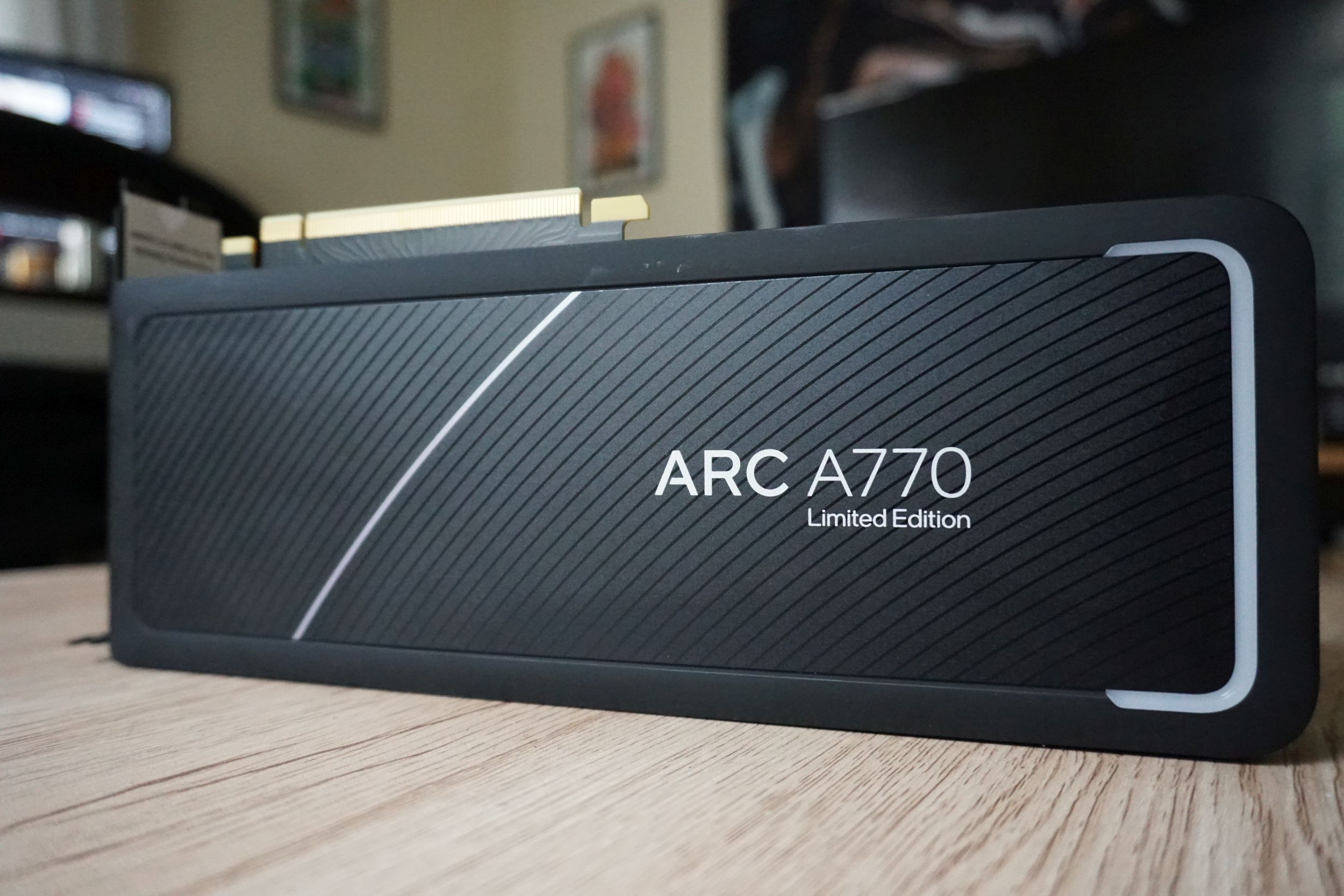
 Image: Adam Patrick Murray/IDG
Image: Adam Patrick Murray/IDG
Intel is entering the GPU market with incredibly competitive prices. The company needs it, because its competitors Nvidia and AMD have decades of experience that Intel lacks. It shows in a lot of ways, none more so than the hit-or-miss drivers seen on early Arc series graphics cards. If you’re wondering how quickly Intel is closing the gap in terms of driver performance, so are we — so PCWorld contributor Keith May decided to give the latest drivers a test drive.
In his YouTube breakdown, Keith is specifically testing the popular wisdom that the Arc A770 (Intel’s introductory flagship) could improve rapidly, thanks to fast driver-based performance changes. He’s planning on a series of tests over several months to see how quickly Intel (and less crucially, game developers themselves) can improve performance on his testing rig. The baseline is the benchmarks for PCWorld’s Arc A770 review, using the same hardware configuration.
Arc A770 Limited Edition
 Read our reviewPrice When Reviewed:$329 (8GB) | $349 (16GB, reviewed)Best Prices Today:$349.99 at B&H Photo | $349.99 at Newegg
Read our reviewPrice When Reviewed:$329 (8GB) | $349 (16GB, reviewed)Best Prices Today:$349.99 at B&H Photo | $349.99 at Newegg
Initial results are mixed. Cyberpunk 2077, Horizon: Zero Dawn, Modern Warfare II, and Assassin’s Creed Valhalla saw small but consistent improvements, while Borderlands 3 and Shadow of the Tomb Raider were essentially flat with an FPS improvement within the margin of error. Watch Dogs: Legion actually showed a marked decrease in frames, so something’s gone wrong between the driver and game updates.
But there is a major bright spot: Total War: Troy. It’s the only DirectX 11 game on Keith’s testing list, and the older standard is an area where Intel’s cards have struggled. In just a month, the game jumped saw a nine to nineteen percent increase in frames per second. It’s a single result, but a promising one, and something to keep an eye on as Intel continues to iterate its software support.

Improved Arc A770 DX9 gaming performance with new driver.
Improved Arc A770 DX9 gaming performance with new driver.
Intel
Improved Arc A770 DX9 gaming performance with new driver.
Intel
Intel
And shortly after this video aired, Intel upped the ante even more, with a driver that turbocharges performance in select DirectX 9 games. Intel says you’ll see up to 1.48x faster performance in StarCraft 2, 1.71x faster performance in League of Legends, and a whopping 2.26x speed boost in Counter-Strike: Global Offensive after installing the 3953 driver. Those are three of the most popular games in the world, and other titles also received a bump.
The work goes on. For future entries in Kieth’s Arc testing series, and more crunchy GPU data, be sure to subscribe to PCWorld on YouTube.
Author: Michael Crider, Staff Writer

Michael is a former graphic designer who’s been building and tweaking desktop computers for longer than he cares to admit. His interests include folk music, football, science fiction, and salsa verde, in no particular order.
Recent stories by Michael Crider:
How to turn your laptop into a desktop workstationBest Cyber Monday graphics card dealsTake a trip inside Intel’s power supply testing lab



